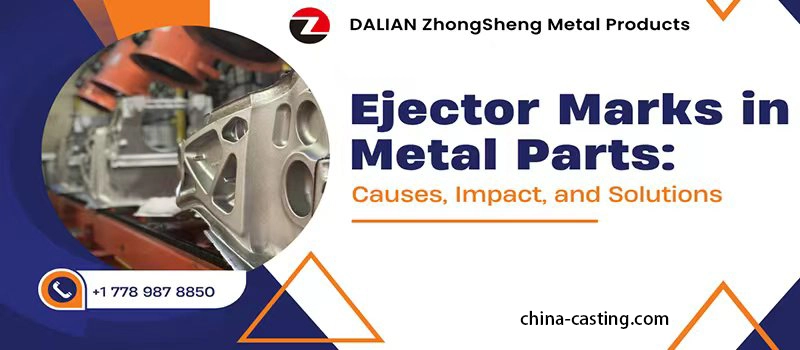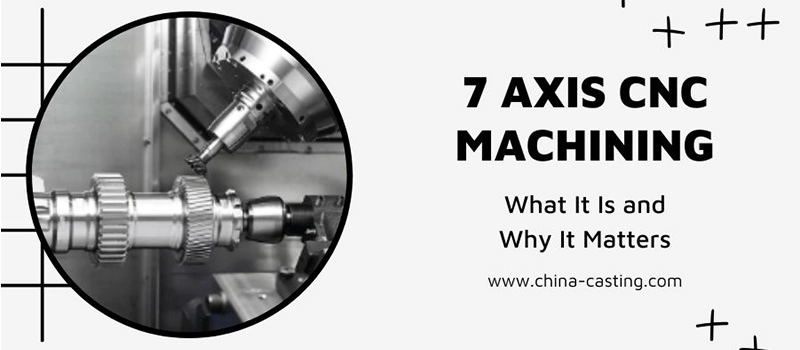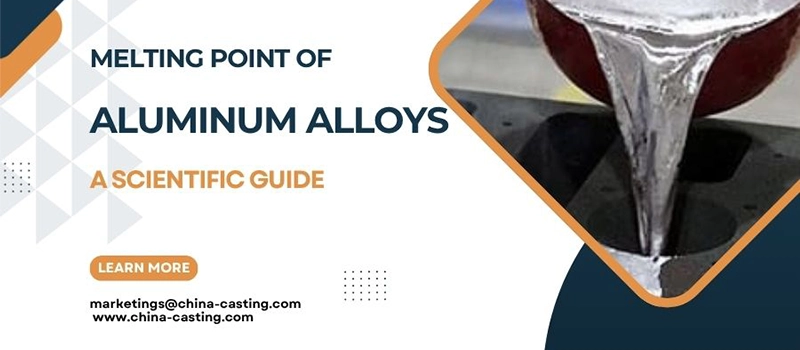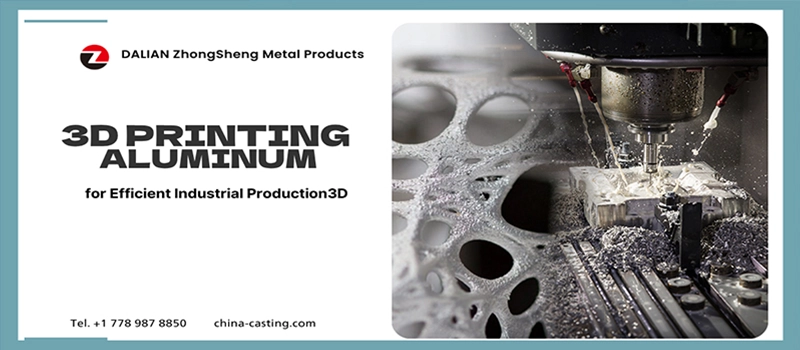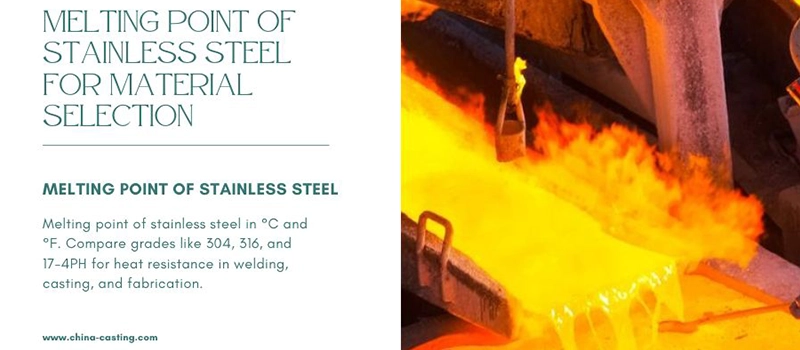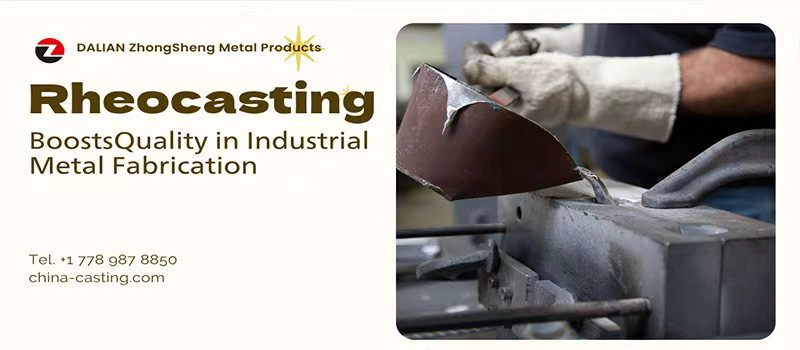Are you struggling to produce complex casting parts with tight tolerances and clean finishes? Have traditional methods like sand casting or die casting failed to meet your cost and quality expectations? Do you need a casting technique that reduces machining, saves time, and still delivers exceptional surface detail?
Shell mold casting process is the solution trusted by manufacturers across industries to achieve dimensional precision and excellent surface finish at competitive costs. Combining the efficiency of sand casting with the detail of investment casting, the shell mold casting process uses a heated metal pattern and resin-coated sand to create thin, durable shell molds. It’s ideal for producing high-strength, complex parts in automotive, agricultural, petrochemical, and construction applications.
If you’re a sourcing manager or industrial buyer looking to streamline production while improving product quality, this comprehensive guide will show you how the shell mold casting process works—and why it might be the best solution for your manufacturing needs.
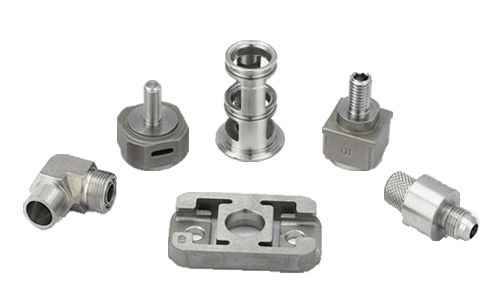
Get a quote now!
What Is Shell Mold Casting Process?
Origins and Definition of Shell Mold Casting
The shell mold casting process is a specialized metal casting technique that uses a thin-walled, hardened shell as the mold for pouring molten metal. Developed in Germany during the mid-20th century, this method quickly gained traction in industries requiring both dimensional precision and production efficiency. Unlike traditional sand casting, shell mold casting uses resin-coated sand to form the mold, offering superior detail, repeatability, and surface finish.
In its most basic form, shell mold casting involves pouring metal into a hardened shell that’s been formed around a heated pattern. Once the metal solidifies, the shell is broken away to reveal the finished part. Because the mold is so rigid and precise, parts require little to no secondary machining—making this process ideal for small- to medium-sized precision components in automotive, petrochemical, and agricultural industries.
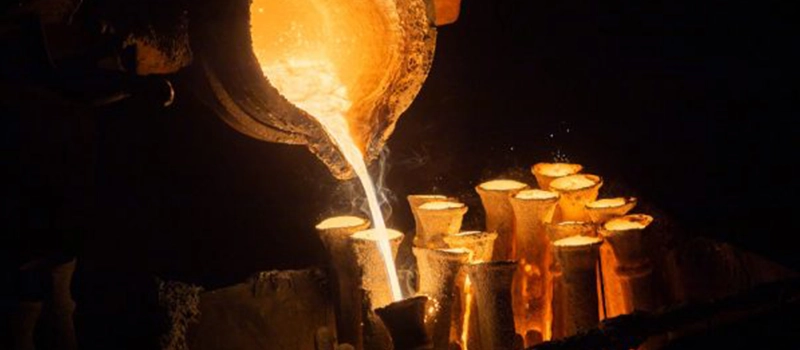
How Shell Mold Casting Differs from Other Techniques
Traditional sand casting relies on loose, unbonded sand to form the mold cavity. While it’s flexible and economical for large parts or small batches, sand casting often produces rough surface finishes and less accurate dimensions. In contrast, shell mold casting uses a rigid shell, formed through heat and chemical reaction, to create a mold with tight tolerances and excellent surface quality.
Compared to investment casting, which involves wax patterns and ceramic slurries, shell mold casting is faster and more cost-effective in medium-volume production runs. While investment casting may offer slightly higher resolution for ultra-complex shapes, shell mold casting provides a strong balance between complexity, cost, and throughput—without requiring the elaborate burnout process.
Why It’s Still Relevant in Modern Manufacturing
In today’s competitive manufacturing landscape, precision and efficiency go hand in hand. The shell mold casting process continues to play a key role in industries where shape complexity, surface quality, and dimensional stability are critical—but so is controlling production cost.
Engineers and manufacturers choose shell mold casting when they need consistency across batches, minimal waste, and the ability to work with materials like cast iron, bronze, stainless steel, or aluminum. Its versatility makes it suitable for a wide range of applications—from gear housings to valve bodies—and its adaptability allows for integration with modern automation and quality control systems.
In short, shell mold casting remains a smart choice where high performance and reasonable costs must coexist.
How the Shell Mold Casting Process Works (Step by Step)
Step 1: Creating and Heating the Metal Pattern
The shell mold casting process begins with the fabrication of a metal pattern, typically made from cast iron or steel. This pattern is a precise replica of the final component, accounting for shrinkage during solidification. Unlike traditional sand casting, where patterns may be made from wood or plastic, shell mold casting requires a durable, heat-resistant metal pattern that can withstand repeated heating cycles.
Once fabricated, the pattern is heated to approximately 175–375°C (350–700°F). This heating step is critical—it activates the thermosetting resin in the next step, allowing it to bond quickly and evenly to the surface. The heated pattern is then positioned for the sand coating phase.
Need Help? We’re Here for You!
Step 2: Coating with Resin-Bonded Sand
The next step is applying resin-coated sand to the heated pattern. This specialized sand is pre-mixed with a heat-activated phenolic resin binder. When poured or blown onto the hot pattern, the resin melts slightly and bonds the sand grains together, forming a hardened shell that mirrors the pattern’s details.
Usually, two layers of sand are applied:
- A fine initial coating for surface detail and finish
- A heavier backing layer for structural strength
The application may be done manually or through an automated shell molding machine. After applying the sand, the pattern is inverted so that loose, unbonded sand can fall away, leaving only the thin hardened shell attached.
Step 3: Curing the Shell and Assembling the Mold
To fully harden the shell, it’s transferred to a curing oven (or the heat from the pattern itself continues the cure). This step ensures the shell achieves maximum rigidity and thermal resistance.
Once cured, the shell halves are removed from the pattern. Most castings require two shell halves that are later assembled to form a complete mold cavity. The two halves are clamped or glued together, and features like gating systems and risers are attached, preparing the mold for metal pouring.
At this point, any necessary shell cores—used to form internal voids—are also inserted. These are typically made from the same resin-coated sand and provide excellent dimensional control.
Step 4: Pouring Molten Metal and Allowing Solidification
With the mold assembled, molten metal (usually between 1300°C and 1600°C depending on the alloy) is poured into the cavity through the gating system. Thanks to the strength of the shell mold, it can withstand this high temperature without breaking down, allowing the metal to fill even the smallest contours of the cavity.
As the metal cools and solidifies, the shape of the mold is precisely transferred to the cast part. The shell’s high rigidity ensures that shrinkage and distortion are minimized, resulting in dimensionally accurate parts with smooth surfaces.
Step 5: Removing the Shell and Final Cleanup
Once the metal has cooled, the shell mold is broken away to reveal the casting. This step, called “shell knockout,” is typically done using mechanical vibration or a knock-out hammer system. Unlike traditional sand molds, which may require water or binders to be washed away, shell molds are thin and brittle, making removal fast and efficient.
After removal, the casting is:
- Deburred and cleaned
- Inspected for surface quality
- Heat-treated or machined if needed
Any excess gating or risers are removed, and if quality standards are met, the casting moves on to packaging or assembly.
This five-step process is what makes the shell mold casting process so appealing—it offers the dimensional control and surface quality of investment casting, while maintaining the cost efficiency and speed of sand casting. It’s a high-performance, scalable method that continues to evolve alongside modern production demands.
Shell Mold Casting vs. Other Casting Methods: What’s the Difference?
Shell Mold Casting vs. Traditional Sand Casting
While both shell mold casting and sand casting fall under the broader umbrella of expendable mold processes, they are quite different in performance, precision, and application.
In traditional sand casting, a loose sand mixture (often mixed with clay or organic binders) is packed around a pattern to create a mold. While it’s cost-effective and suitable for large, heavy components, sand casting produces a rougher surface finish, and its dimensional accuracy is generally lower.
Shell mold casting, by contrast, uses resin-coated sand that forms a thin, hardened shell around a heated pattern. The result is a mold that offers:
- Tighter tolerances
- Better surface finish (Ra as low as 1.6–3.2 μm)
- More consistent repeatability
Another key difference is mold strength: a shell mold is more rigid, allowing it to capture finer details and thinner walls without deformation. This reduces or eliminates the need for post-machining, saving time and money.
Need Help? We’re Here for You!
Shell Mold Casting vs. Investment Casting
Investment casting, also known as lost wax casting, is another precision casting technique. It involves creating a wax model, surrounding it with ceramic slurry, and then melting the wax out to form a mold cavity.
Compared to shell mold casting:
- Investment casting offers extremely fine detail—even more intricate than shell casting
- It is better suited for complex, high-tolerance aerospace and medical parts
- However, it requires multiple steps (wax injection, pattern tree assembly, ceramic dipping), which makes it slower and more expensive
Shell mold casting is faster, more automated, and ideal for medium-complexity parts in higher volumes. It provides a good balance between precision and efficiency, making it more cost-effective for many industrial applications.
Shell Molding vs. Ceramic Shell Investment Casting
Ceramic shell casting (a type of investment casting) involves creating multilayered ceramic molds. While the names are similar, the two processes differ significantly.
Shell molding (our topic here) uses resin-bonded sand and a heated pattern, making it more suitable for components that require:
- Medium to high precision
- Low-to-mid-volume production
- High thermal resistance and mechanical strength
Ceramic shell casting, on the other hand:
- Offers superior detail and surface finish
- Takes longer to prepare due to the drying of multiple ceramic layers
- Is often used for very small, high-precision parts
Performance and Cost Comparison Table
| Feature | Shell Mold Casting | Sand Casting | Investment Casting |
|---|---|---|---|
| Surface Finish (Ra) | 1.6–3.2 µm | 6.3–25 µm | 1.6–3.2 µm |
| Tolerances | ±0.3% (up to ±0.13 mm) | ±1.0% or more | ±0.1% or better |
| Complexity of Geometry | Moderate to high | Low to moderate | Very high |
| Mold Preparation Time | Fast (semi-automated) | Fast | Slow |
| Tooling Cost | Medium | Low | High |
| Production Volume Suitability | Medium to high | Low to high | Low to medium |
| Post-Machining Required | Minimal | Significant | Minimal |
In summary, shell mold casting bridges the gap between low-cost traditional methods and ultra-precise but expensive techniques like investment casting. It’s ideal for manufacturers who want:
- High dimensional accuracy
- Smooth surface finish
- Medium to high production volumes
- Better repeatability than sand casting
This is why it’s widely chosen across multiple industries seeking efficiency without compromising quality.
Key Benefits of the Shell Mold Casting Process
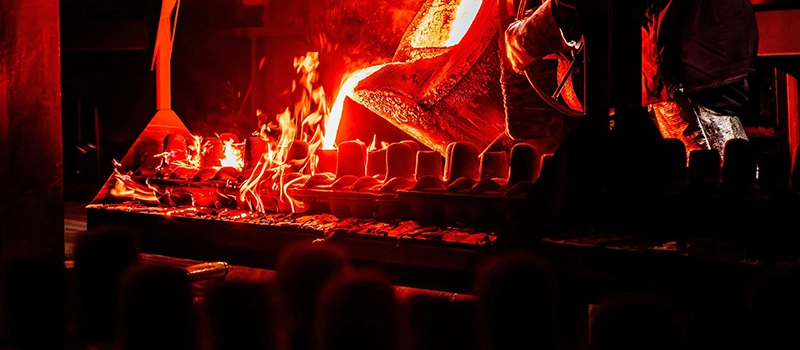
Exceptional Dimensional Accuracy and Repeatability
One of the most important advantages of the shell mold casting process is its ability to deliver highly accurate, repeatable parts. The use of a heated metal pattern combined with resin-coated sand forms a rigid mold that retains its shape under thermal stress. As a result, castings maintain tolerances as tight as ±0.13 mm, even for intricate geometries.
For industries like automotive and petrochemical, where parts must be identical across thousands of units, this level of repeatability makes the shell mold casting process extremely valuable. Consistent results mean fewer rejections, reduced machining, and reliable performance in end-use applications.
Smooth Surface Finishes That Minimize Post-Machining
The surface finish achieved with the shell mold casting process is notably superior to traditional sand casting. Surface roughness levels can reach as low as Ra 1.6–3.2 µm, which often eliminates the need for grinding or polishing after casting.
This not only saves production time but also preserves material integrity by avoiding excess removal. For components like pump housings, gear covers, and valve bodies, the clean surfaces resulting from the shell mold casting process help reduce friction and improve performance.
Complex Geometries and Thin-Walled Designs
Thanks to the mold’s rigidity and the controlled nature of the shell formation, the shell mold casting process is ideal for producing parts with complex internal channels or thin wall sections that other methods can’t reliably reproduce.
Where sand molds may collapse or deform, the hardened shell maintains its structure, allowing molten metal to flow into fine cavities. This is particularly useful in casting parts such as impellers, fan blades, or turbine housings where internal shape integrity is crucial.
Faster Cycle Times and Improved Production Efficiency
Unlike investment casting, which involves wax removal and ceramic drying, the shell mold casting process uses quick-curing resin sand. This enables rapid mold preparation and faster turnaround between casting cycles. The shell molds are lightweight, easy to handle, and suited for semi-automated production lines.
This efficiency reduces production bottlenecks, supports medium to high-volume manufacturing, and results in lower cost per part—especially important in competitive global supply chains.
Material and Cost Efficiency
Because the shell mold casting process allows for high dimensional control, there is minimal excess material to machine off after casting. This lowers raw material waste and energy usage, especially for expensive alloys like stainless steel or bronze.
Additionally, the relatively low cost of tooling compared to investment casting makes the shell mold casting process ideal for manufacturers seeking cost-effective precision without investing in complex wax injection or ceramic dip systems.
In summary, the shell mold casting process offers a rare combination of precision, efficiency, and cost control. Whether you’re casting structural supports, automotive brackets, or industrial fittings, this method can consistently deliver parts that meet both technical and economic requirements.
Materials Used in Shell Mold Casting
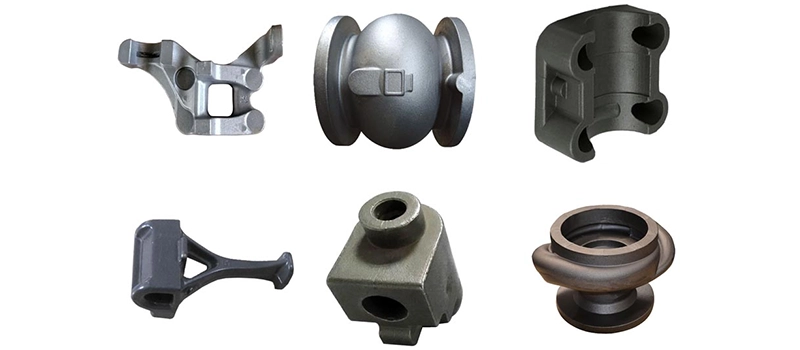
Common Metals Used in the Shell Mold Casting Process
One of the strengths of the shell mold casting process is its flexibility in accommodating a wide range of ferrous and non-ferrous alloys. This adaptability makes it a practical solution for parts that demand both mechanical strength and detailed geometry.
The most commonly used metals include:
- Cast Iron: Often used for engine brackets, housings, and industrial equipment due to its excellent wear resistance and castability.
- Carbon Steel and Alloy Steels: Ideal for applications requiring high tensile strength and impact resistance, such as gear housings and load-bearing components.
- Stainless Steel: Perfect for corrosive environments like petrochemical or marine industries. It retains fine detail well in the shell mold casting process.
- Aluminum Alloys: Lightweight yet strong, aluminum is used for parts requiring excellent heat dissipation and low mass—common in automotive and electronics.
- Bronze and Brass: Used in pump parts, valves, and decorative components, these alloys are well-suited for shell casting due to their fluidity and surface finish quality.
Resin-Coated Sand: The Backbone of the Shell Mold
The mold material in the shell mold casting process is made from silica sand coated with a thermosetting resin—usually phenolic. This resin is activated by heat, causing the sand particles to bind together and form a strong, thin shell when applied to the heated metal pattern.
Benefits of using resin-coated sand include:
- Fast curing time
- Consistent mold thickness
- Excellent thermal resistance
- Sharp edge reproduction
The quality of the resin-sand mixture directly affects the casting’s finish and dimensional accuracy. Therefore, controlling the ratio of resin to sand, as well as maintaining proper storage conditions, is essential to achieving consistent results in the shell mold casting process.
Ceramic Shell Hybrids and Special Coatings
While the classic shell mold casting process uses resin-coated sand, some advanced applications incorporate ceramic shells or hybrid materials to push the boundaries of temperature resistance and detail.
Ceramic shell casting—more commonly associated with investment casting—can be adapted in combination with resin shells for parts that require:
- Extreme surface detail
- Complex internal cavities
- High-temperature resistance beyond 1600°C
These hybrid techniques are more expensive and complex but provide manufacturers with the precision needed for aerospace and high-performance engineering components.
Need Help? We’re Here for You!
Factors for Material Selection in Shell Mold Casting
When selecting materials for the shell mold casting process, engineers must consider:
- Thermal conductivity (important for cooling rates)
- Melting point compatibility with the resin shell
- Final application requirements, such as corrosion or wear resistance
- Machinability after casting
- Cost-performance ratio
Selecting the right material ensures that parts perform as expected while remaining cost-effective and manufacturable. The shell mold casting process makes this easier by providing high fidelity in detail and geometry, regardless of the alloy used.
In conclusion, the shell mold casting process is not limited to a narrow range of materials. Whether working with cast iron for heavy-duty machinery or aluminum for lightweight auto parts, this method delivers consistent, high-quality results across metals and applications.
Shell Casting Applications Across Industries
Automotive Industry: Precision Under the Hood
The shell mold casting process plays a crucial role in automotive manufacturing, where precision, durability, and weight optimization are essential. Components such as brackets, pump housings, manifolds, clutch parts, and gear covers are commonly produced using this method.
Because of its ability to maintain tight tolerances and produce near-net shapes, the shell mold casting process helps automakers reduce:
- Machining time
- Assembly errors
- Production costs
It’s also effective for casting thin-walled structures that contribute to overall vehicle weight reduction, improving fuel efficiency and performance.
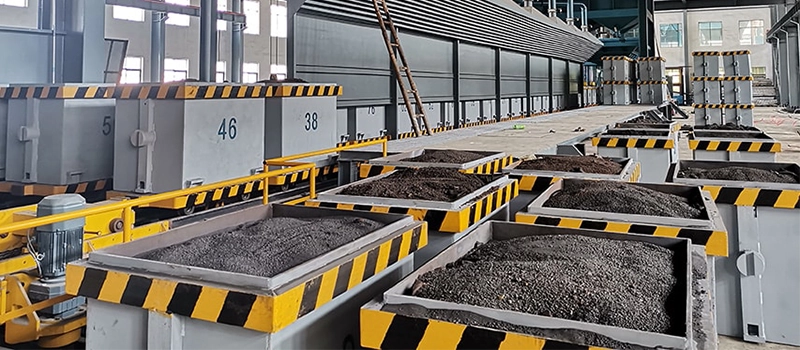
Petrochemical and Energy Sectors: Resistance to Harsh Environments
In petrochemical processing, equipment operates under extreme pressure, high temperatures, and corrosive conditions. The shell mold casting process is used to manufacture critical parts such as:
- Valve bodies
- Pump components
- Flanges
- Flow control housings
Stainless steel and bronze are common material choices here, and the smooth finish offered by the shell mold casting process is especially important for maintaining flow efficiency and reducing friction or erosion.
Agricultural Equipment: Durability in the Field
Agricultural machinery must perform reliably under constant vibration, heavy loads, and exposure to dust, mud, and chemicals. Components such as gear housings, couplings, lever brackets, and custom mounting systems benefit from the dimensional stability and surface strength achieved through the shell mold casting process.
Because many farm equipment parts are produced in medium batches, the process offers the perfect balance of customization and cost efficiency for this sector.
Construction Hardware and Structural Parts
In the construction industry, the shell mold casting process is used to produce:
- Structural connectors
- Mounting hardware
- Bracing brackets
- Pipe fittings
These parts must meet building codes for load-bearing, corrosion resistance, and dimensional reliability. The shell mold ensures uniformity across parts and supports compliance with strict standards.
General Industrial and OEM Applications
Many Original Equipment Manufacturers (OEMs) rely on the shell mold casting process for small-to-medium metal components that require:
- Precise dimensions
- Clean surface finishes
- Repeatable production cycles
This includes parts for:
- Machine tools
- Pumps
- Compressors
- Heating systems
- Electric motor housings
The versatility of the shell mold casting process makes it a practical choice across dozens of industries—not just for high performance, but also for maintaining quality over repeated production runs.
In every industry it touches, the shell mold casting process provides a dependable solution for producing complex, performance-driven components—without sacrificing consistency or cost control.
Shell Casting Certifications, Compliance, and International Standards

CE Marking and GPSR Compliance in the Shell Mold Casting Process
For products destined for the European Union market, the shell mold casting process must meet strict compliance guidelines—most notably CE certification under the General Product Safety Regulation (GPSR).
This includes:
- Declaring conformity with applicable EU directives
- Ensuring product safety, even when no specific harmonized standards exist
- Appointing an Authorized European Representative if the manufacturer is based outside the EU
A CE-marked shell casting must be:
- Traceable by batch and production date
- Accompanied by a Declaration of Conformity (DoC)
- Supported by a technical documentation file proving safe design, material selection, and process control
For global suppliers, achieving CE compliance enhances customer trust and simplifies customs clearance across EU countries.
ISO 9001 and Quality Management in Shell Mold Casting
ISO 9001 certification is widely regarded as the gold standard in quality assurance for manufacturing—including foundry and metal casting operations. A foundry utilizing the shell mold casting process under ISO 9001 demonstrates its commitment to:
- Consistency in material input and process flow
- Defect reduction and continuous improvement
- Meeting or exceeding customer quality requirements
Auditors typically assess:
- Incoming raw material verification
- Mold and core inspection reports
- Molten metal handling procedures
- Final part inspection and non-conformance tracking
Maintaining ISO 9001 certification signals a reliable production system capable of meeting large-scale industrial demand with low rejection rates.
Need Help? We’re Here for You!
Technical File Documentation and Traceability
One essential requirement for compliance—especially in B2B and international contracts—is the creation of a technical file for every casting or product line manufactured using the shell mold casting process. This file usually contains:
- Engineering drawings and 3D models
- Material specifications and test certificates
- Shell mold design details and curing parameters
- Inspection records (visual, dimensional, and sometimes NDT)
- Conformity assessments or safety declarations
This documentation provides buyers, inspectors, and customs authorities with clear proof of safety, traceability, and conformity—crucial for industries like oil & gas, automotive, and aerospace.
Why Certification Matters in Global Sourcing
For many international buyers, especially in North America, Europe, Japan, and South Korea, supplier certification is not optional—it’s a procurement requirement. Without valid ISO, CE, or equivalent compliance documents, cast parts may:
- Be rejected at customs
- Fail internal audits
- Be excluded from final assembly due to traceability gaps
- Cause liability issues in the case of structural failure or malfunction
By ensuring the shell mold casting process is properly certified, manufacturers build long-term relationships based on transparency, accountability, and technical confidence.
In short, casting excellence is not just about molten metal and molds—it’s also about paperwork, process verification, and full lifecycle traceability. For the shell mold casting process to be a true value-add in global supply chains, certification and compliance are just as important as surface finish and tolerance control.
Future Trends in Shell Mold Casting Technology
Digital Mold Design and 3D Simulation Integration
As industries demand faster prototyping and more precision, the shell mold casting process is evolving through digital transformation. Advanced CAD/CAM software now allows foundry engineers to:
- Design casting geometry with optimized shrinkage compensation
- Simulate metal flow and solidification in real time
- Predict and prevent common casting defects before production begins
These digital simulations reduce trial-and-error cycles, minimize material waste, and shorten time-to-market. When integrated with shell mold automation systems, they enable highly repeatable and scalable production without sacrificing quality.

Direct Shell Production Casting (DSPC)
Direct Shell Production Casting represents a major innovation that blends additive manufacturing (AM) with shell molding. In this process:
- A ceramic or resin shell mold is 3D-printed directly from CAD files
- No pattern tooling is required
- Mold complexity is no longer constrained by the limitations of physical patterns
Although still in the early stages of industrial adoption, DSPC is expected to revolutionize the shell mold casting process in applications requiring:
- Low-volume, high-complexity parts
- Rapid design iteration
- Complex internal features
As DSPC technology matures, it may redefine the cost-effectiveness of the process for industries like aerospace, defense, and medical manufacturing.
Hybrid Resin-Ceramic Shell Materials
Material innovation is also pushing the shell mold casting process forward. Hybrid shell technologies that combine resin-bonded sand with ceramic slurry coatings are gaining interest for high-temperature and high-pressure applications.
These hybrids deliver:
- Improved thermal resistance
- Superior shell strength
- Better dimensional stability under extreme pouring temperatures
While more expensive to produce, hybrid shells open the door to casting superalloys, titanium-based components, and critical load-bearing structures.
Automation and Robotic Integration
Automation is already present in many modern shell mold casting lines, but the next generation will feature robotic systems for:
- Pattern handling and rotation
- Sand application with ultra-consistent coating thickness
- Automated shell curing and assembly
- Real-time defect inspection using AI-driven imaging
As labor costs rise and skilled foundry workers become harder to find, this automation wave will make the shell mold casting process more efficient, scalable, and globally competitive.
Sustainability and Environmental Compliance
Environmental regulations are becoming stricter across all manufacturing sectors. Foundries using the shell mold casting process are investing in:
- Low-emission resins to reduce VOC output
- Sand reclamation systems to recycle used resin-coated sand
- Closed-loop water cooling to reduce resource consumption
- Real-time fume extraction monitoring
These efforts not only meet environmental compliance standards but also reduce operational costs over the long term—making the process cleaner and more profitable.
In summary, the shell mold casting process is far from static. With innovations in digital design, hybrid materials, robotics, and sustainability, it continues to evolve into a more precise, intelligent, and eco-friendly method of precision casting. Forward-thinking manufacturers are already embracing these changes to remain competitive in the global marketplace.

Get a quote now!
Tips for Buyers: How to Order Shell Mold Castings
Preparing Technical Drawings and Specification Documents
When sourcing cast parts using the shell mold casting process, your first priority should be the clarity and completeness of technical documentation. A professional drawing should include:
- 2D dimensional drawings with all critical tolerances clearly labeled
- 3D CAD models, preferably in STEP or IGES format
- Indications of machined surfaces, non-critical areas, and as-cast tolerances
- Notations for surface finish requirements, including Ra values
- Material specifications, including any alloy grades or heat treatment standards
Providing clean, standardized data ensures accurate mold creation and minimizes back-and-forth with the supplier.
Choosing the Right Material and Process Parameters
One of the advantages of the shell mold casting process is its compatibility with various metals and part types. However, buyers must work closely with suppliers to choose:
- The correct alloy based on strength, weight, corrosion resistance, or machinability
- The appropriate shell thickness for part complexity and pour temperature
- Casting orientation and gating design for optimal metal flow and defect prevention
- Any shell core requirements for internal voids or undercuts
A trusted supplier can guide you through material comparisons and suggest cost-saving alternatives without compromising part performance.
Understanding Cost Structure and Minimum Order Quantities
Pricing in the shell mold casting process involves several components:
- Tooling cost (one-time for pattern fabrication)
- Per-unit casting price, which varies based on weight, material, and complexity
- Machining or post-processing costs, if requested
- Packaging, logistics, and export documentation fees
Buyers should confirm:
- Whether prices are FOB, CIF, or EXW
- Minimum order quantities (MOQs), which are often lower than with investment casting
- The payment terms (e.g., 30/70 T/T, LC, PayPal for small orders)
Understanding these variables allows you to make better sourcing decisions and avoid hidden costs.
Lead Times and Production Scheduling
Standard lead times for shell mold casting process orders typically range from:
- 2–3 weeks for tooling development
- 3–5 weeks for first article or pilot run
- 2–4 weeks for volume production runs, depending on part complexity and order size
Delays can occur due to:
- Incomplete drawings or unclear requirements
- Material shortages
- Peak season or trade fair production overload
- Customs or export document hold-ups
Working with a reliable supplier who communicates proactively helps mitigate these risks. It’s also helpful to build in buffer time if parts are needed for integration into larger assemblies.
Inspection, Packaging, and Logistics Considerations
Before shipment, ensure that your supplier provides:
- Dimensional inspection reports, including results for all tolerances
- Material certificates and, if applicable, heat treatment records
- Photos of each casting, especially surface finishes and machined areas
- Standard export packaging (e.g., fumigated wooden crates, foam lining)
For large orders or sensitive parts, you may request:
- Third-party inspection by SGS, TUV, or local agents
- Custom branding, labeling, or barcoding
- Specific logistics methods (air freight, sea freight, express courier)
Good packaging and documentation reduce the risk of transit damage and simplify customs clearance, especially for international B2B trade.
In conclusion, sourcing cast parts through the shell mold casting process requires thoughtful preparation, clear communication, and attention to detail. By providing accurate drawings, selecting appropriate materials, and aligning expectations on cost and lead time, buyers can unlock the full value of this high-precision, cost-efficient casting method.
Conclusion
The shell mold casting process remains a trusted solution for producing complex, high-precision metal parts with efficiency and consistency. Its ability to deliver tight tolerances, smooth finishes, and reduced machining makes it a go-to choice across industries.
At Dalian ZhongSheng Metal Products, we specialize in providing reliable, high-quality shell mold casting services tailored to your exact specifications. With certified processes, global experience, and a commitment to excellence, we’re ready to support your next project.
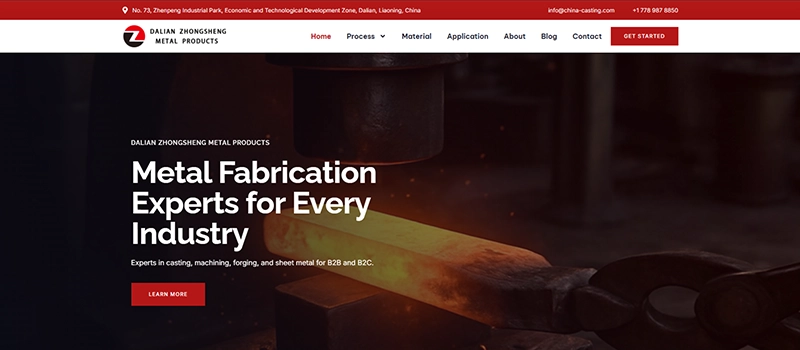
Contact us today to learn how our casting solutions can help streamline your production and reduce your costs.


